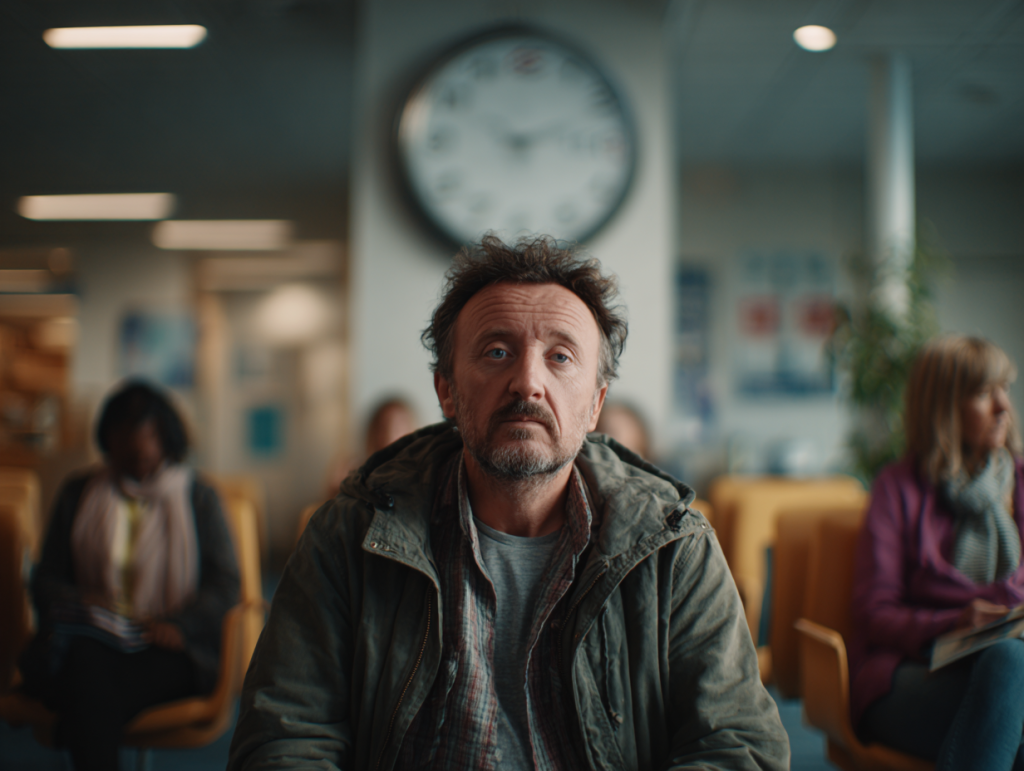As product managers, we live in the tension between needs and outcomes. Users tell us what they need, stakeholders promise what they want, and teams deliver what they can. When those translations line up, it feels like progress. When they don’t, dysfunction creeps in.
This isn’t just about missed deadlines or delayed features. It’s a structural truth: every time a system allows promises to outpace resources, dysfunction thrives. The backlog grows, frustration compounds, and the gap between intent and delivery widens until it feels normal.
And this isn’t confined to product. Step outside the sprint board, and you’ll find the same pattern everywhere. Take healthcare waiting times — a universally recognisable case of promises collapsing under the weight of limited resources.
Scenario: The Infinite Waiting Room
Situation
Patient is in his mid-40s, otherwise healthy, but he’s been struggling with a recurring knee injury. It’s painful enough to make daily life difficult, yet not severe enough to be treated as urgent. His GP referred him months ago, but the appointment letter never came. The posters in the waiting room promise faster treatment and better services — promises that feel increasingly hollow.
Impact
As weeks turn into months, the pain worsens. Patient takes more time off work, skips football with his mates, and avoids long walks with his family. His world quietly shrinks. The injury, once a nuisance, is now shaping his lifestyle. And he can’t escape the suspicion that if his case were more urgent, he’d have been seen already.
Task
Patient considers his options. He can wait it out, hoping the system eventually catches up. He could write to his MP, but he doubts it will speed anything up. Private treatment is available, but financially out of reach. None of these paths feel like real choices — just different ways of managing disappointment.
Actions
Patient adapts. He waits. He rearranges his life to accommodate the pain. He tells himself this is normal, that everyone else is stuck in the same queue. Slowly, his frustration dulls into resignation. The system has taught him not to expect the promise to be kept.
Results
What began as anger has become acceptance. The posters no longer register; the promises have no weight. Patient isn’t naïve — he knows the dysfunction isn’t personal, it’s systemic. But he’s the one living inside it. Over time, he has learned not just to wait, but to stop expecting better.
See the Cracks Before Users Adapt
The patient’s journey shows a behavioural truth we can’t ignore: dysfunction doesn’t always explode dramatically — it seeps in until it feels normal. At first, frustration is sharp. But repeated failures dull it into resignation, and eventually into apathy.
This is what sociologist Diane Vaughan called the normalisation of deviance: people adapt to small dysfunctions until they stop seeing them as problems at all. In product, this happens when onboarding steps are confusing, when “retry later” errors never get fixed, or when promised features never quite work as expected. At first, users get frustrated. But if the cracks persist, they adapt — working around issues, lowering expectations, or abandoning the feature quietly.
As product managers, our responsibility is to spot those cracks before users stop caring. Because once they’ve adjusted their behaviour, you’ve lost more than trust — you’ve lost the chance to deliver the happy path.
When Incentives Reward Optics, Dysfunction Multiplies
The patient sits in the waiting room, surrounded by posters that promise faster service. On paper, the system looks like it’s improving. Dashboards show progress, press releases highlight commitments, and targets are loudly declared. Yet the outcome hasn’t changed — the patient is still waiting.
This disconnect isn’t accidental; it’s a product of incentives. Systems reward what looks orderly, not what actually delivers. This is Goodhart’s Law in action: once a measure becomes a target, it stops being a good measure. Pair it with Campbell’s Law — the more a metric is used for decision-making, the more it corrupts the process it was meant to monitor — and you have a recipe for dysfunction on repeat.
Product managers see this pattern all the time. Leadership wants to see velocity charts going up, story points closed, roadmaps filled. Teams learn to optimise for the optics — shipping features that demo well, reporting numbers that look tidy — even if the real user outcomes are stagnant. On the surface, everything sparkles. Beneath it, cracks widen.
Our role is to break that cycle. To resist rewarding optics over substance, and to redirect incentives toward genuine outcomes. Because if we don’t, dysfunction doesn’t just persist — it multiplies.
Champion the Happy Path Before Dysfunction Becomes the Default
For the patient, the journey ends in apathy. Frustration gave way to resignation, resignation slid into acceptance, and the system trained him not to expect better. That’s what happens when cracks go unchallenged — the unhappy path becomes the only path.
As product managers, we can’t allow our users to reach that stage. Our responsibility is to champion the happy path early, before dysfunction hardens into expectation. That means:
- Listening closely to signals of frustration, even when users don’t voice them loudly.
- Treating near-misses and small cracks as leading indicators, not minor annoyances.
- Asking the uncomfortable question: “Are we meeting a real need, or just creating the optics of progress?”
Theory backs this up. Donella Meadows reminded us that the most powerful leverage points in a system aren’t the metrics but the mindsets that drive behaviour. If we want to prevent dysfunction from becoming the default, we have to shift the mindset of our teams and stakeholders toward genuine outcomes. That means celebrating when promises and resources align, and challenging when they don’t.
Because in the end, dysfunction wins only when no one fights for the alternative. And if we don’t fight for the happy path on behalf of our users, who will?
Conclusion
From waiting rooms to backlogs, the pattern repeats: when promises outpace resources, dysfunction wins. The patient’s journey is a mirror of what happens to users everywhere — needs left unmet, cracks normalised, expectations lowered.
But as product managers, we hold a different position. We can see those cracks early, trace them back to misaligned incentives, and fight for the path that keeps promises and outcomes aligned. That’s not just delivery discipline — it’s behavioural stewardship.
Because dysfunction isn’t inevitable. It thrives only when it goes unchallenged. And our role, above all else, is to challenge it — with clarity, with courage, and with care for the people on the other side of the system.
Behavioural Principles
When Promises Outpace Resources
-
Dysfunction thrives in silence
When cracks go unchallenged, users adapt until they stop expecting better. -
Normalisation is dangerous
Frustration decays into resignation, and resignation slides into apathy. -
Optics reward the wrong outcomes
Systems celebrate metrics and dashboards, even as lived experience deteriorates. -
Users rarely shout
They quietly adapt, leaving dysfunction invisible until it’s entrenched. -
Cracks are signals, not noise
Every workaround or silent compromise is evidence of systemic idiocy. -
PMs are custodians of trust
Our job is to fight for the happy path before dysfunction becomes the default.




